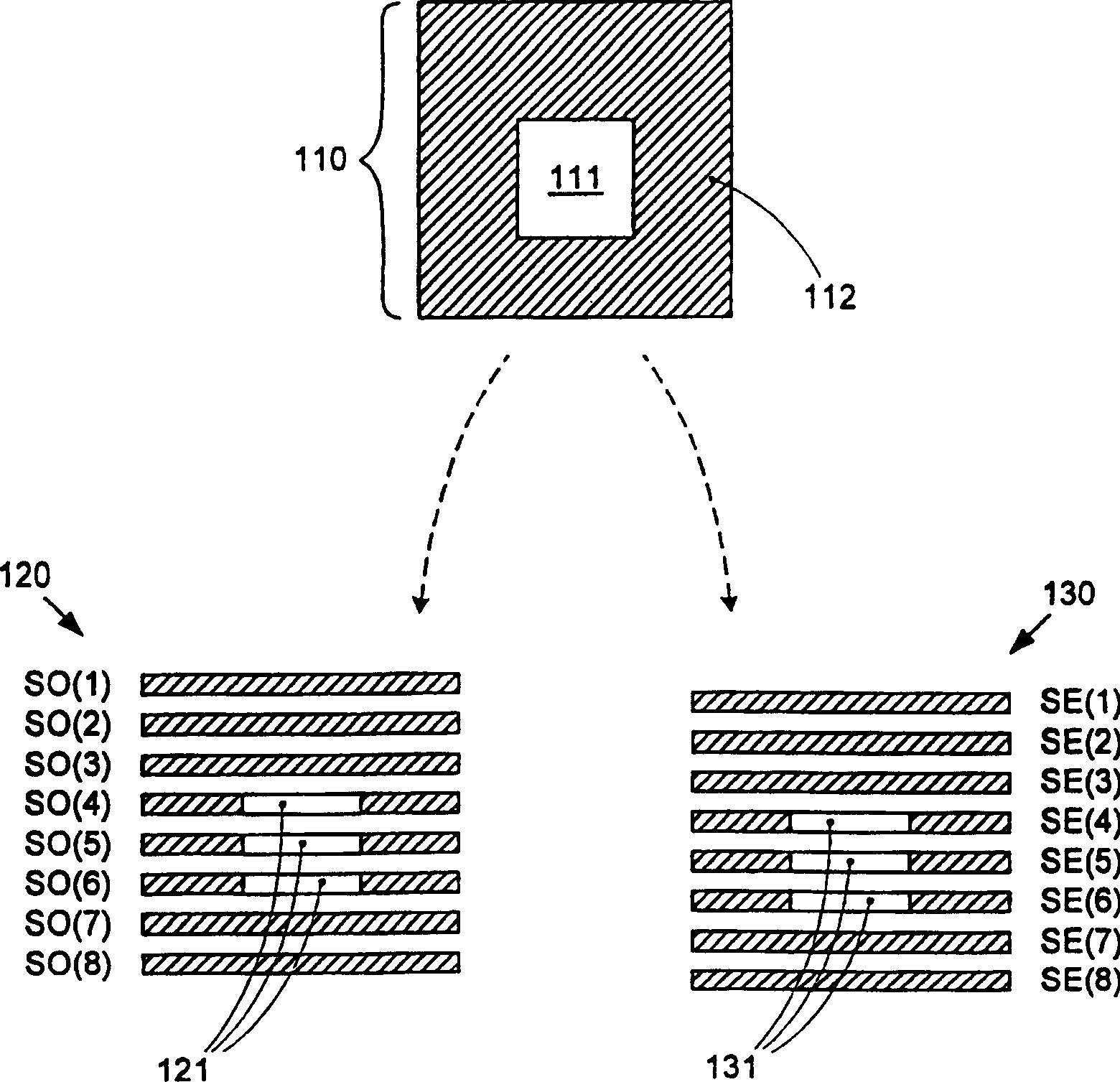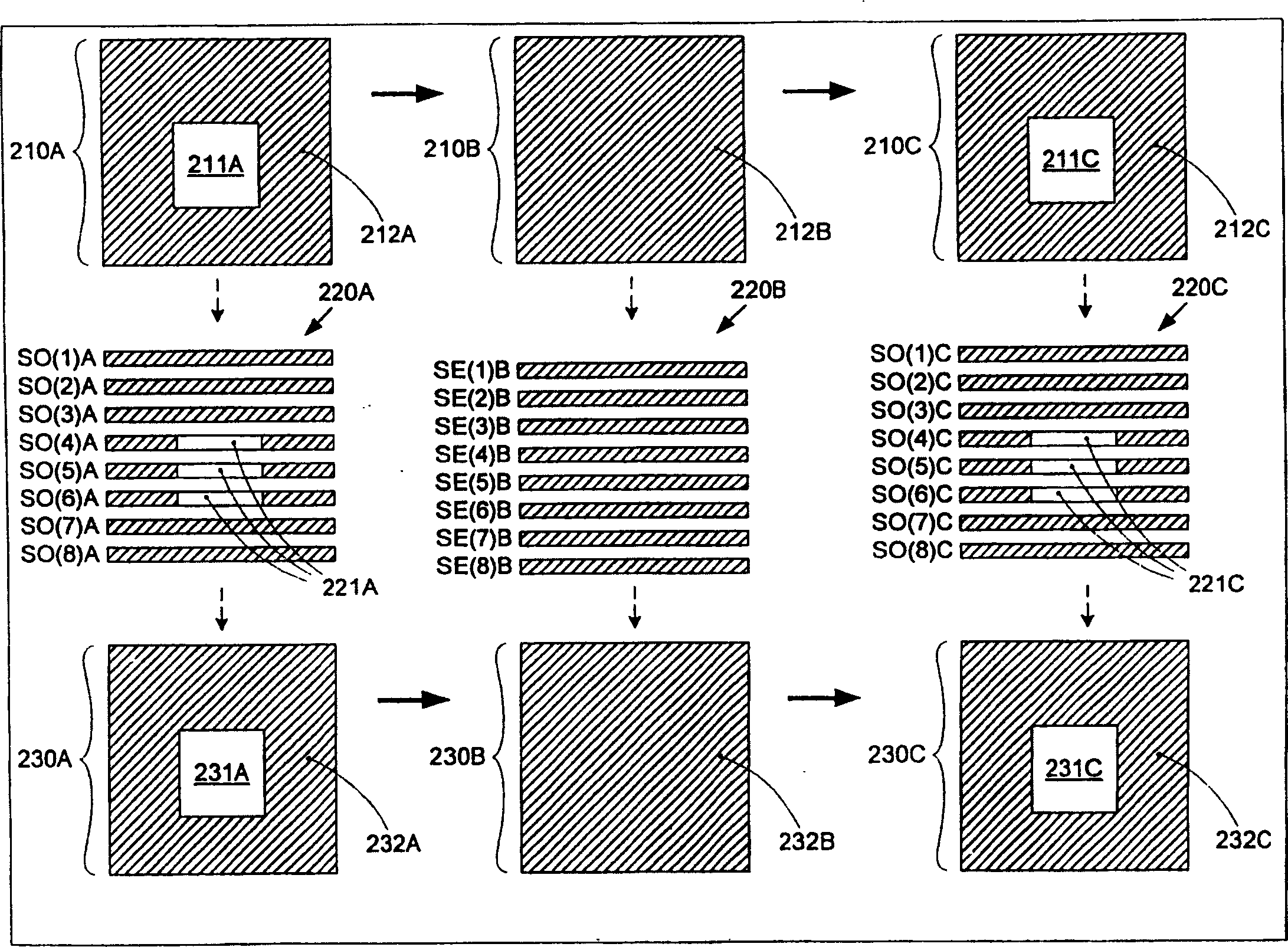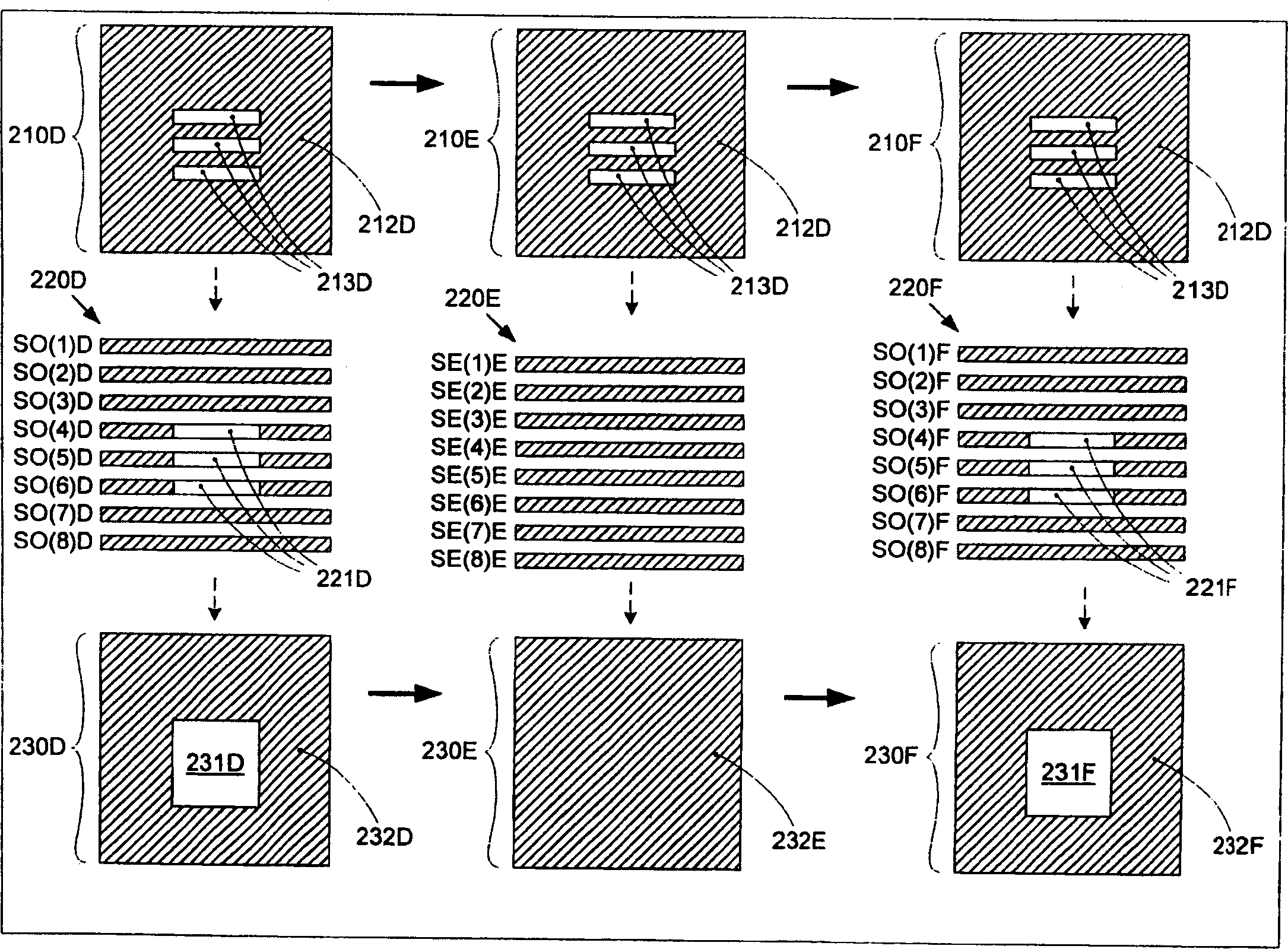Method of interleave and line by line conversion of mixing two dimensional and three dimensional
A technology of interlaced video and interpolation algorithm, applied in the field of digital display system
- Summary
- Abstract
- Description
- Claims
- Application Information
AI Technical Summary
Problems solved by technology
Method used
Image
Examples
Embodiment Construction
[0035] The method based on the invention provides a hybrid two-dimensional and three-dimensional interlaced progressive conversion method for generating accurate progressive video display signals from interlaced video signals. The data in the interlaced video field stream is interpolated by applying the current field data (i.e. the data in the field where the pixel to be interpolated is located) and the front and rear field data (i.e. the data in the video field different from the current field) to each line in the current field. Each field is converted into an image frame. The "hybrid" interpolation method can effectively reduce the defects caused by the traditional two-dimensional interlaced progressive conversion method for static scenes.
[0036] Figure 3A Four consecutive interlaced video fields 600(T-1), 600(T), 600(T+1) and 600(T+2) are shown. Each field contains twenty pixels arranged in five columns and four rows C1, C2, C3, C4 and C5. Even fields 600(T-1) and 600...
PUM
 Login to View More
Login to View More Abstract
Description
Claims
Application Information
 Login to View More
Login to View More - R&D
- Intellectual Property
- Life Sciences
- Materials
- Tech Scout
- Unparalleled Data Quality
- Higher Quality Content
- 60% Fewer Hallucinations
Browse by: Latest US Patents, China's latest patents, Technical Efficacy Thesaurus, Application Domain, Technology Topic, Popular Technical Reports.
© 2025 PatSnap. All rights reserved.Legal|Privacy policy|Modern Slavery Act Transparency Statement|Sitemap|About US| Contact US: help@patsnap.com



